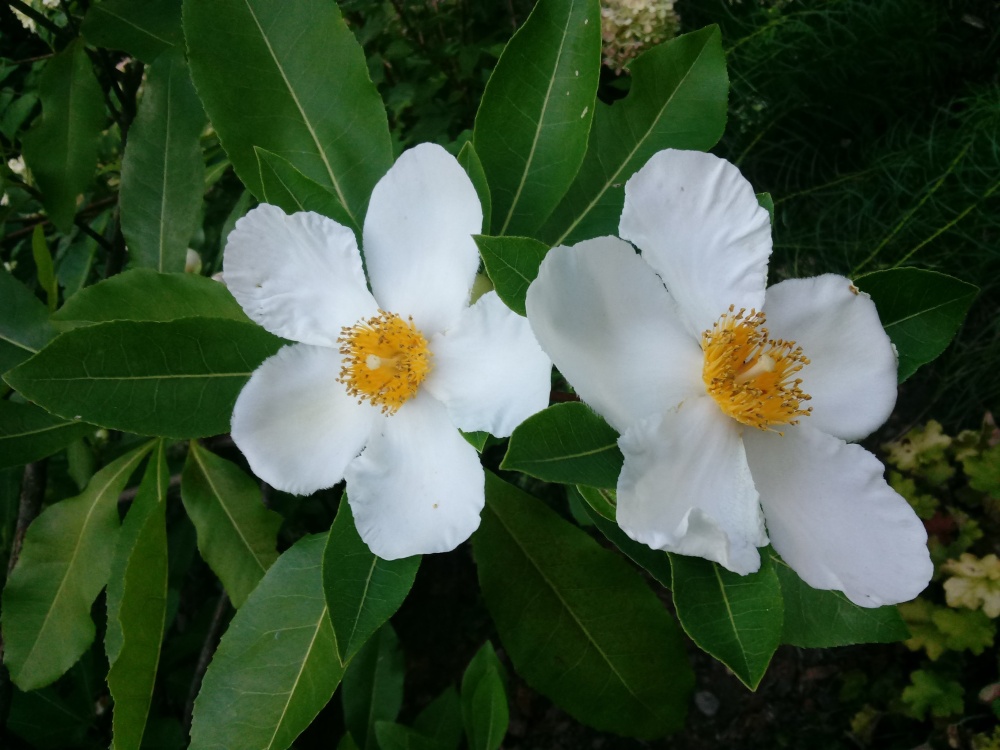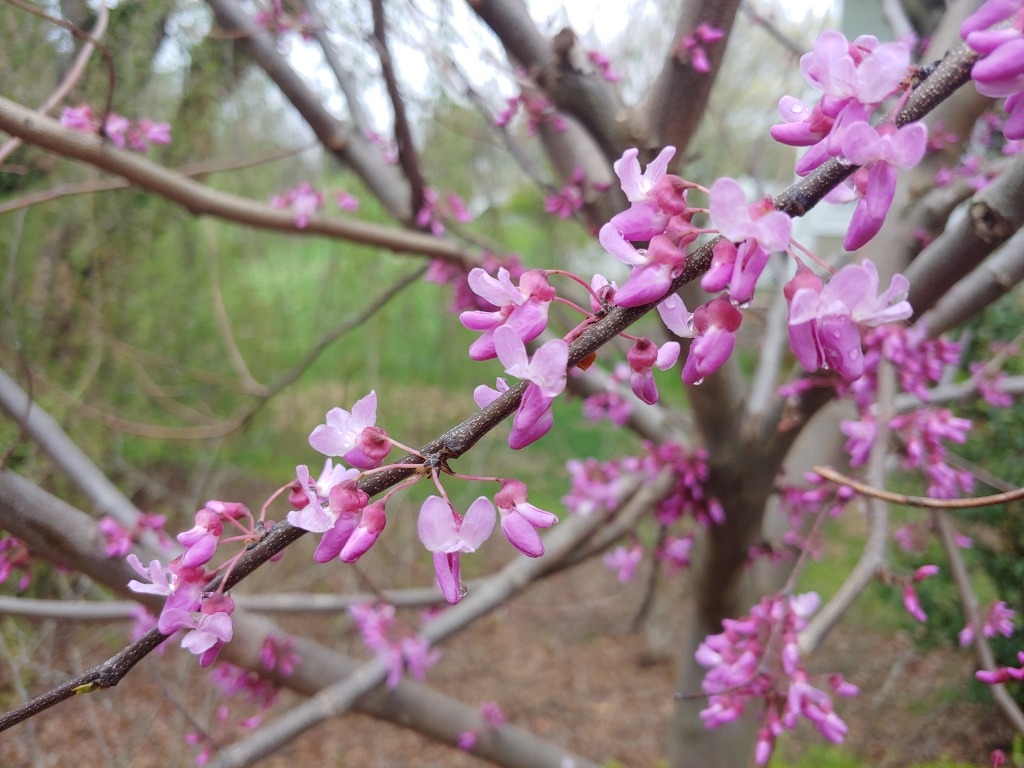Years ago, a six foot, well branched Franklinia (Franklinia alatamaha, below) was planted beside the garden shed, an ideal placement close to a regularly trodden path and with soil moisture and sun exposure that I deemed well suited to this out of the ordinary tree. The Franklinia grew vigorously with no care on my part, and with splendid late summer blooms and exceptional autumn foliage color the tree was favored above all others.

And then it declined, by a small degree at first, but over two years this treasure faded and perished. So many times over the three decades in this garden I am clueless about a plant’s decline, but here the reason seemed obvious. Long before the Franklinia was planted I discovered that the shed was constructed over top of a trickle of a natural spring. Coinciding with the Franklinia’s decline, the spring now gushed moisture, also causing the loss of a nearby holly and witch hazel, both long established.

As determined as I was, I could not locate a replacement of reasonable size, so a change was made to Gordlinia (xGordlinia grandiflora, above), for better or worse, but planted in a higher and drier location. The mutli stemmed gordlinia is not a perfect substitute for Franklinia. It is a big shrub, hardly a tree, and while its flowers and foliage are similar, its autumn foliage color is lacking by comparison to the splendid coloring of Franklinia. Also, by mid winter leaves of the evergreen gordlinia are fried to a unattractive brown. But, I’m as happy to have it as I am disappointed to lose the Franklinia.

Some day the dogwood (Cornus florida, above) planted along the front walk will be lost. I figure that for at least twenty years the dogwood has been afflicted with a variety of cankers, black spots, and annual bouts with powdery mildew. Leaves and flowers are spotted, but after so long I’m betting the tree outlasts me. Another dogwood in the rear garden is out of regular sight lines, but it does not suffer these maladies, just as a native dogwood along the forest’s edge is completely free of spots and mildew. There’s likely to be some highly poisonous treatment to clean the one in the front, but that’s not an option.

One of two variegated redbuds (Cercis canadensis ‘Silver Cloud’, above) that leaned badly was removed in late winter, and I must get around to cutting dead wood from the other. Like dogwoods, redbuds are likely to have a few issues over decades in a garden, though usually none are disfiguring. A bit further up the hill another redbud was planted in late autumn, and while its leaf is also variegated it is with yellow and green rather than the white and green of ‘Silver Cloud’. This tree is a sport of the yellow leafed ‘Rising Sun’, so I’m anxious for its flowers to fade so I can see its foliage color.

I notice that this spring lower branches of the Carolina silverbell (Halesia carolina, above) must be pulled from far overhead to view flowers close up. While silverbell is an understory tree just as dogwood and redbud, it grows tall and I’ve seen that it sheds lower branches that are more shaded. In any case, the tree is best viewed from or kitchen window, and in the absence of the Franklinia these are the blooms that I anticipate most eagerly.
At least I am not the only one with problems of powdery mildew on Dogwood. It usually starts showing here in midsummer.
I’m so sorry to hear about your lost Franklinia. It sounds amazing. I have a small Gordlinia; this will be its second summer. I’m hoping to train it into a more of a tree form than a bush.
My gordlinia is a clump of three smaller trees planted together. They seem as though they would be resistant to growing as a single trunk, and I’ve seen some leaning after snow or ice so that I question the sturdiness of the roots. If you can encourage a stable trunk it could be an excellent tree.